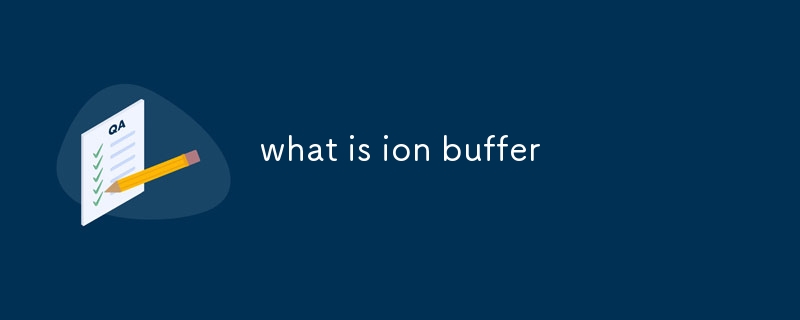
Ion buffers are solutions that maintain a stable pH by resisting changes in hydrogen ion concentration. They work by absorbing or releasing ions, regulating ion concentrations and pH levels in biological and chemical systems. Ion buffers are crucial

What is the mechanism behind the ion buffer system?
An ion buffer system is a solution that resists changes in pH by absorbing or releasing hydrogen ions (H+). It consists of a weak acid and its conjugate base, or a weak base and its conjugate acid. When an acid is added to the buffer, the weak acid will react with the H+ ions to form more of the conjugate base, thereby preventing a significant increase in H+ concentration and pH. Conversely, when a base is added, the weak acid will donate H+ ions to form more of the conjugate acid, preventing a significant decrease in H+ concentration and pH.
How does an ion buffer regulate changes in ion concentration?
Ion buffers regulate changes in ion concentration by maintaining a relatively constant pH level. When the concentration of a specific ion increases, the buffer system will either absorb or release that ion to maintain the desired pH. For example, a phosphate buffer system can absorb H+ ions when added as an acid or release H+ ions when added as a base, thereby regulating the pH and ion concentration within a specific range.
What are the practical applications of ion buffers in biological and chemical systems?
Ion buffers have numerous practical applications in biological and chemical systems:
Biological systems:
Chemical systems:
The above is the detailed content of what is ion buffer. For more information, please follow other related articles on the PHP Chinese website!
 Free personal website source code
Free personal website source code
 Introduction to commands for creating new files in Linux
Introduction to commands for creating new files in Linux
 MySQL error 1171 solution
MySQL error 1171 solution
 How to open the registry
How to open the registry
 What is the difference between hardware firewall and software firewall
What is the difference between hardware firewall and software firewall
 How to switch between full-width and half-width
How to switch between full-width and half-width
 Win11 skips the tutorial to log in to Microsoft account
Win11 skips the tutorial to log in to Microsoft account
 Ouyi app download
Ouyi app download




